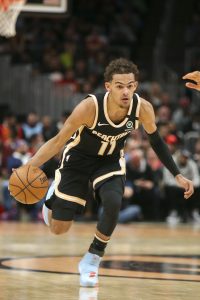Despite some speculation earlier in the year that the financial impact of the coronavirus pandemic would dissuade NBA teams from making head coaching changes (and having to pay two contracts at once), 2020 has been an eventful year on the league’s coaching carousel.
Ten teams have made changes since we listed the NBA’s longest-tenured head coaches in the summer of 2019. That’s a full third of the league.
Of those who were replaced, Doc Rivers (Clippers), Brett Brown (Sixers), and Billy Donovan (Thunder) had ranked among the top 10 longest-tenured head coaches, while only David Fizdale (Knicks), Jim Boylen (Bulls), and John Beilein (Cavaliers) had coached their respective clubs for fewer than four seasons.
Given the turnover in the head coaching ranks, it’s time we update our list. Here’s the current breakdown of the NBA’s longest-tenured head coaches by team, sorted by the date they were hired:
- Gregg Popovich, Spurs: December 1996
 Erik Spoelstra, Heat: April 2008
Erik Spoelstra, Heat: April 2008- Rick Carlisle, Mavericks: May 2008
- Terry Stotts, Trail Blazers: August 2012
- Brad Stevens, Celtics: July 2013
- Steve Kerr, Warriors: May 2014
- Quin Snyder, Jazz: June 2014
- Michael Malone, Nuggets: June 2015
- Scott Brooks, Wizards: April 2016
- James Borrego, Hornets: May 10, 2018
- Lloyd Pierce, Hawks: May 11, 2018
- Mike Budenholzer, Bucks: May 17, 2018
- Steve Clifford, Magic: May 30, 2018
- Dwane Casey, Pistons: June 11, 2018
- Nick Nurse, Raptors: June 14, 2018
- Ryan Saunders, Timberwolves: January 2019
- Luke Walton, Kings: April 2019
- Monty Williams, Suns: May 3, 2019
- Note: Remained a Sixers assistant through the end of Philadelphia’s playoff run.
- Frank Vogel, Lakers: May 13, 2019
- Taylor Jenkins, Grizzlies: June 2019
- J.B. Bickerstaff, Cavaliers: February 2020
- Tom Thibodeau, Knicks: July 2020
- Steve Nash, Nets: September 3, 2020
- Billy Donovan, Bulls: September 22, 2020
- Doc Rivers, Sixers: October 3, 2020
- Nate Bjorkgren, Pacers: October 20, 2020
- Tyronn Lue, Clippers: October 20, 2020
- Stan Van Gundy, Pelicans: October 22, 2020
- Stephen Silas, Rockets: October 30, 2020
- Mark Daigneault, Thunder: November 2020
Photo courtesy of USA Today Sports Images.

